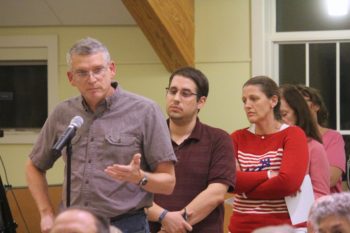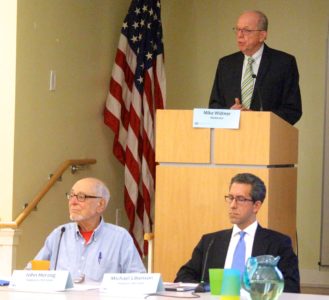Photo: The sign.
The sign and its message are simple and concise:
“Wed. Oct. 19th
Deadline
Register to Vote!
Your Conscience”
“That’s great,” said Belmont Town Clerk Ellen Cushman of the sign that is taped to a clothes hanger and placed in the holes of sign posts running along Trapelo Road from the Waltham line near Beaver Brook to the Cushing Square Starbucks.
“The date’s correct and we do want people to know when to register,” Cushman told the Belmontonian Friday, Sept. 30.
But Cushman said neither she nor her office has anything to do with the hanger signs. Nor is this a cost effective campaign from the Belmont League of Women Voter, said member Bonnie Friedman who was in Town Hall for a Board of Selectmen’s meeting.
Then who is “The Hanger” who took the time to place the signs on the posts along one of Belmont’s busiest corridors?
- Is it high school students doing a project for social studies class?
- An operative of a political party committed to guerilla marketing?
- Could it be a fan of US Senator Ted “Vote your conscience” Cruz?
If you placed these signs on Belmont roadways, write to the Belmontonain why you did it.

